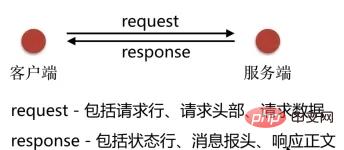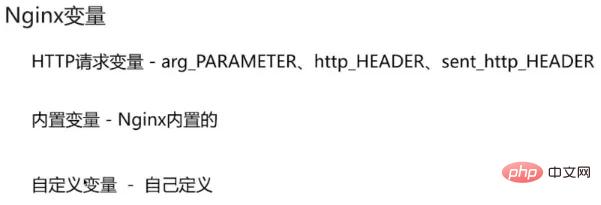 Operation and Maintenance
Operation and Maintenance
 Nginx
Nginx
 How to implement access control and connection restrictions based on Nginx
How to implement access control and connection restrictions based on Nginx
How to implement access control and connection restrictions based on Nginx
1. Default configuration syntax

user 设置使用用户 worker_processes 进行增大并发连接数的处理 跟cpu保持一致 八核设置八个 error_log nginx的错误日志 pid nginx服务启动时候pid
worker_connections一个进程允许处理的最大连接数 use定义使用的内核模型
root 首页的路径 index 首页默认访问哪个页面 error_page 500 502 503 504 /50x.html 错误页面 前面的500是**`http状态码`** systemctl restart nginx.service 重启nginx systemctl reload nginx.service 不关闭服务柔和地重启
2. http

curl-v http://www.baidu.com >/dev/null #-v 同时显示状态码等信息 nginx -v #显示nginx版本及配置文件等信息
3. Log
Log type: error.log and access.logerror.log(记录处理http请求的错误状态以及nginx本身服务的错误状态) access.log(每次http请求的访问状态)
4. Variables

#Connection limit limit_conn_module
limit_conn_module: Tcp connection frequency limit, one TCP connection can establish multiple http requests. Configuration syntax:
| Range | Description | |
|---|---|---|
| http | Used to declare a storage space | |
| http, server or location | Used to limit the number of concurrencies of a certain storage space | |
| http, server or location | When the maximum number of connection limits is reached, the level of the log is recorded | |
| http, server Or location | When the limit is exceeded, the response status code returned, the default is 503 |
space to record the connection status , to limit the quantity. zone is a space that stores connection status, stored in key-value pairs, usually using the client address $binary_remote_addr as key to identify each connection. When
zone space is exhausted, the server will return 503 (service temporarily unavailable) error to all subsequent requests.
Request limit limit_req_mudule
##limit_req_mudule:httpRequest frequency limit, one tcp connection can Create multiple http requests. Configuration syntax:
| Range | Description | |
|---|---|---|
| http | Used to declare a storage space | |
| http, server or location | Used to limit the number of concurrencies of a certain storage space |
| http_access_module语法 | 范围 | 说明 |
|---|---|---|
| allow ip地址 | cidr网段 | unix: | all; | http、server、location和limit_except | 允许ip地址、cidr格式的网段、unix套接字或所有来源访问 |
| deny ip地址 | cidr网段 | unix: | all; | http、server、location和limit_except | 禁止ip地址、cidr格式的网段、unix套接字或所有来源访问 |
allow和deny会按照顺序, 从上往下, 找到第一个匹配规则, 判断是否允许访问, 所以一般把all放最后
location / {
deny 192.168.1.1;
allow 192.168.1.0/24;
allow 10.1.1.0/16;
allow 2001:0db8::/32;
deny all;
}基于用户密码的访问控制
http_auth_basic_module: 基于文件匹配用户密码的登录
| http_auth_basic_module语法 | 范围 | 说明 |
|---|---|---|
| auth_basic 请输入你的帐号密码 | off; | http、server、location和limit_except | 显示用户登录提示 (有些浏览器不显示提示) |
| auth_basic_user_file 存储帐号密码的文件路径; | http、server、location和limit_except | 从文件中匹配帐号密码 |
密码文件可以通过htpasswd生成,htpasswd需要安装yum install -y httpd-tools。
# -c 创建新文件, -b在参数中直接输入密码 $ htpasswd -bc /etc/nginx/conf.d/passwd user1 pw1 adding password for user user1 $ htpasswd -b /etc/nginx/conf.d/passwd user2 pw2 adding password for user user2 $ cat /etc/nginx/conf.d/passwd user1:$apr1$7v/m0.if$2kpm9nvvxbav.jsuvuqr01 user2:$apr1$xmoo4zzy$df76u0gzxbd7.5vxe0use0
The above is the detailed content of How to implement access control and connection restrictions based on Nginx. For more information, please follow other related articles on the PHP Chinese website!

Hot AI Tools

Undresser.AI Undress
AI-powered app for creating realistic nude photos

AI Clothes Remover
Online AI tool for removing clothes from photos.

Undress AI Tool
Undress images for free

Clothoff.io
AI clothes remover

AI Hentai Generator
Generate AI Hentai for free.

Hot Article

Hot Tools

Notepad++7.3.1
Easy-to-use and free code editor

SublimeText3 Chinese version
Chinese version, very easy to use

Zend Studio 13.0.1
Powerful PHP integrated development environment

Dreamweaver CS6
Visual web development tools

SublimeText3 Mac version
God-level code editing software (SublimeText3)

Hot Topics
 How to allow external network access to tomcat server
Apr 21, 2024 am 07:22 AM
How to allow external network access to tomcat server
Apr 21, 2024 am 07:22 AM
To allow the Tomcat server to access the external network, you need to: modify the Tomcat configuration file to allow external connections. Add a firewall rule to allow access to the Tomcat server port. Create a DNS record pointing the domain name to the Tomcat server public IP. Optional: Use a reverse proxy to improve security and performance. Optional: Set up HTTPS for increased security.
 How to run thinkphp
Apr 09, 2024 pm 05:39 PM
How to run thinkphp
Apr 09, 2024 pm 05:39 PM
Steps to run ThinkPHP Framework locally: Download and unzip ThinkPHP Framework to a local directory. Create a virtual host (optional) pointing to the ThinkPHP root directory. Configure database connection parameters. Start the web server. Initialize the ThinkPHP application. Access the ThinkPHP application URL and run it.
 Welcome to nginx!How to solve it?
Apr 17, 2024 am 05:12 AM
Welcome to nginx!How to solve it?
Apr 17, 2024 am 05:12 AM
To solve the "Welcome to nginx!" error, you need to check the virtual host configuration, enable the virtual host, reload Nginx, if the virtual host configuration file cannot be found, create a default page and reload Nginx, then the error message will disappear and the website will be normal show.
 How to communicate between docker containers
Apr 07, 2024 pm 06:24 PM
How to communicate between docker containers
Apr 07, 2024 pm 06:24 PM
There are five methods for container communication in the Docker environment: shared network, Docker Compose, network proxy, shared volume, and message queue. Depending on your isolation and security needs, choose the most appropriate communication method, such as leveraging Docker Compose to simplify connections or using a network proxy to increase isolation.
 How to register phpmyadmin
Apr 07, 2024 pm 02:45 PM
How to register phpmyadmin
Apr 07, 2024 pm 02:45 PM
To register for phpMyAdmin, you need to first create a MySQL user and grant permissions to it, then download, install and configure phpMyAdmin, and finally log in to phpMyAdmin to manage the database.
 How to deploy nodejs project to server
Apr 21, 2024 am 04:40 AM
How to deploy nodejs project to server
Apr 21, 2024 am 04:40 AM
Server deployment steps for a Node.js project: Prepare the deployment environment: obtain server access, install Node.js, set up a Git repository. Build the application: Use npm run build to generate deployable code and dependencies. Upload code to the server: via Git or File Transfer Protocol. Install dependencies: SSH into the server and use npm install to install application dependencies. Start the application: Use a command such as node index.js to start the application, or use a process manager such as pm2. Configure a reverse proxy (optional): Use a reverse proxy such as Nginx or Apache to route traffic to your application
 How to generate URL from html file
Apr 21, 2024 pm 12:57 PM
How to generate URL from html file
Apr 21, 2024 pm 12:57 PM
Converting an HTML file to a URL requires a web server, which involves the following steps: Obtain a web server. Set up a web server. Upload HTML file. Create a domain name. Route the request.
 What to do if the installation of phpmyadmin fails
Apr 07, 2024 pm 03:15 PM
What to do if the installation of phpmyadmin fails
Apr 07, 2024 pm 03:15 PM
Troubleshooting steps for failed phpMyAdmin installation: Check system requirements (PHP version, MySQL version, web server); enable PHP extensions (mysqli, pdo_mysql, mbstring, token_get_all); check configuration file settings (host, port, username, password); Check file permissions (directory ownership, file permissions); check firewall settings (whitelist web server ports); view error logs (/var/log/apache2/error.log or /var/log/nginx/error.log); seek Technical support (phpMyAdmin





